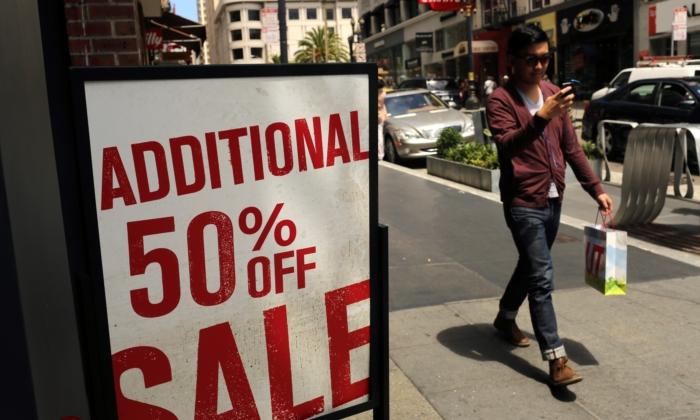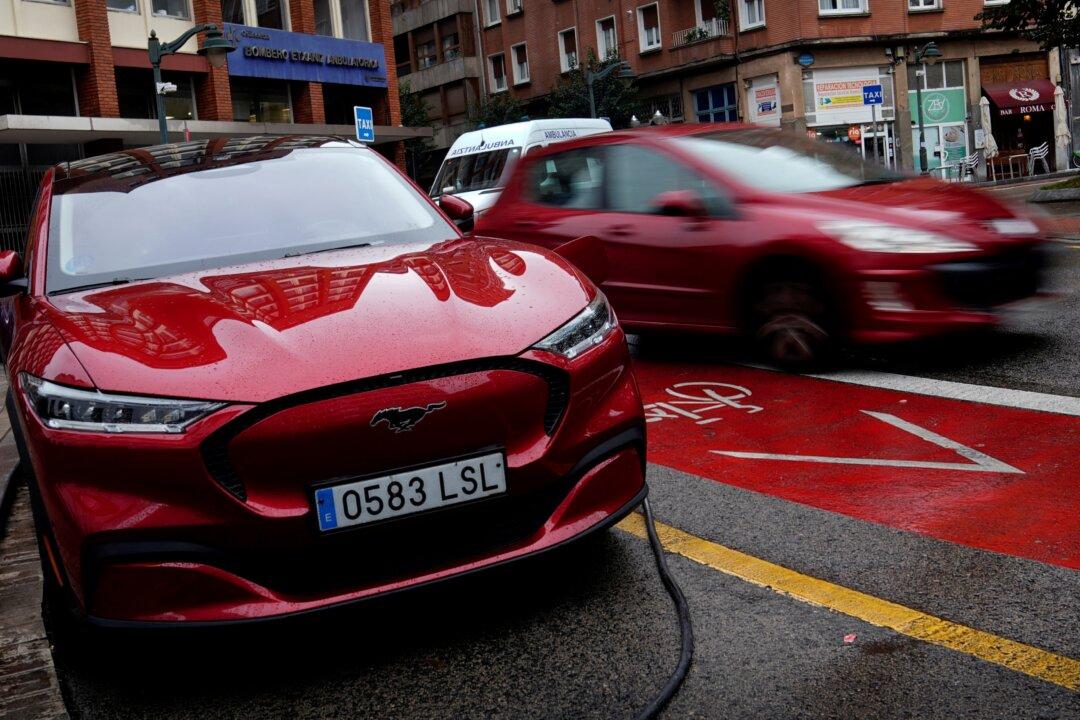WASHINGTON—U.S. retail sales rose less than expected in June as receipts at service stations and building material stores declined, but consumers boosted or maintained spending elsewhere, which likely kept the economy on a solid growth path in the second quarter.
Overall, the mixed report from the Commerce Department on Tuesday painted a picture of consumer resilience, though slowing momentum in spending growth. It did not change expectations that the Federal Reserve would resume raising interest rates this month after keeping them unchanged in June.
“The forces meant to hold back real spending power after 16 months of Fed tightening—drawdowns in pandemic savings, high inflation, higher borrowing costs—fell short of meaningfully slowing consumption,” said Will Compernolle, macro strategist at FHN Financial in New York.
“The resilient consumer shows the Fed has very little reason to think its tightening has gone too far at this point.”
Retail sales increased 0.2 percent last month. Data for May was revised higher to show sales gaining 0.5 percent instead of 0.3 percent as previously reported. Economists polled by Reuters had forecast retail sales gaining 0.5 percent. Retail sales are mostly goods and are not adjusted for inflation. They rose 1.5 percent year-on-year in June.
Spending has remained strong despite 500 basis points worth of interest rate hikes from the Fed since March 2022, when the U.S. central bank kicked off its fastest monetary policy tightening cycle in more than 40 years.
A tight labor market continues to boost wage gains while some households still have savings accumulated during the COVID-19 pandemic. Consumers’ purchasing power is also gradually rising as inflation subsides.
Sales at auto dealerships rose 0.3 percent in June, despite motor vehicle manufacturers reporting an acceleration in unit sales last month. Auto sales surged 1.5 percent in May. There has been a divergence between unit sales reported by manufacturers and the retail sales data.
“This is somewhat related to the fact that there is an underlying rotation happening in the space with a larger share of vehicle sales now headed to businesses rather than consumers amid a normalization after pandemic-related disruptions caused a large surge in consumer auto sales,” said Shannon Seery, an economist at Wells Fargo in New York. “Consumer demand for autos is subsiding after being pulled forward and financing costs now reaching the highest level in 16 years.”
Online sales surged 1.9 percent, the most in six months. Further gains are likely after Amazon hosted its Prime Day promotion in July, which was the biggest on record.
Receipts at furniture stores increased 1.4 percent and electronics and appliance store sales advanced 1.1 percent. Clothing store sales rose 0.6 percent in June.
But receipts at building material and garden equipment supplies dealers dropped 1.2 percent. Consumers also cut back spending on sporting goods, hobbies, books, and musical instruments.
Grocery store sales fell as did receipts at department stores. Sales at service stations dropped 1.4 percent on lower gasoline prices.
Sales at food services and drinking places edged up 0.1 percent after rising 1.2 percent in May. Economists view dining out as a key indicator of household finances. Though Americans spent less at restaurants and bars, credit and debit card data suggest they are boosting spending on other services.
Services are the largest share of consumer spending.
“Decreased spending on gasoline indicates that lower- and middle-income households are economizing on discretionary spending, reflecting cost-of-living pressures,” said Bill Adams, chief economist at Comerica Bank in Dallas. “Big crowds at airports and sky-high prices for concert tickets point to robust spending by wealthier households this summer, though.”
Stocks on Wall Street were trading higher. The dollar was steady versus a basket of currencies. U.S. Treasury yields fell.

Strong Core Sales
Excluding automobiles, gasoline, building materials, and food services, retail sales increased 0.6 percent in June. Data for May was revised slightly up to show these so-called core retail sales increasing 0.3 percent instead of the previously reported 0.2 percent.Core retail sales correspond most closely with the consumer spending component of gross domestic product. June’s solid rise and May’s upward revision to core retail sales suggest that consumer spending, which accounts for more than two-thirds of the U.S. economy, continued to grow last quarter.
The pace was, however, probably slower than the first quarter’s rate, which was the fastest in nearly two years.
Economists at Bank of America Securities raised their second-quarter GDP estimate to a 1.7 percent annualized rate from a 1.5 percent pace. The economy grew at a 2.0 percent rate in the January–March quarter.
“The economy is plodding along without overheating,” said David Russell, vice president of Market Intelligence at TradeStation. “This is modestly positive news for investors worried about the Fed needing to hike after July.”
While consumers are holding up, manufacturers are wilting under the onslaught of higher rates. A separate report from the Fed showed manufacturing output dropped 0.3 percent in June after falling 0.2 percent in May. The weakness in manufacturing is mostly confined to goods production, with industries related to services like travel continuing to expand.
“We expect this dynamic to continue in coming months, although recent resilience of economic activity, with our expectation for a recession pushed to the first half of 2024, could even keep manufacturing production somewhat more supported,” said Andrew Hollenhorst, chief economist at Citigroup in New York.





